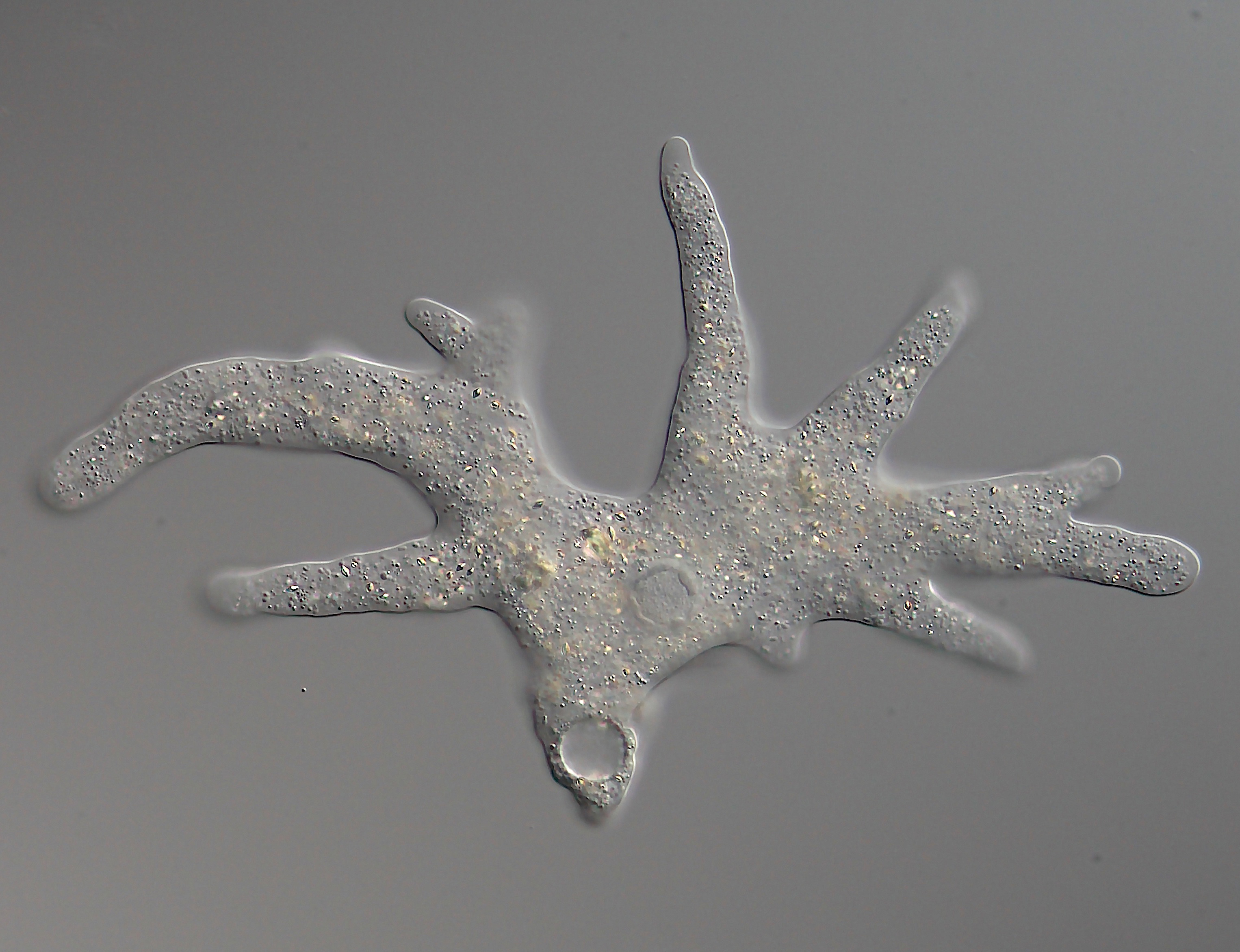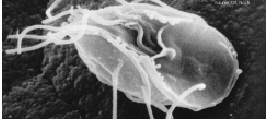|
Cryptodifflugiidae
Cryptodifflugiidae is a family of arcellinid testate amoebae. Description Members of this family are conopodous (with conical pseudopods) amoebae with the body in a clear, usually firm, vase-shaped test, and conical pseudopods for locomotion that extend separately from the opening of the test. Classification The classification of the family, as of 2019: * Infraorder Phryganellina Bovee 1985 ** Family Cryptodifflugiidae Penard 1890 ***'' Cryptodifflugia'' Cash 1904 – 23 species *** ''Meisterfeldia'' Bobrov 2016 – 6 species *** ''Wailesella'' Deflandre 1928 – 1 species The 2022 classification places ''Meisterfeldia'' and ''Wailesella Arcellinid testate amoebae or Arcellinida,http://www.microscopy-uk.org.uk/mag/artjun03/gsamoebae.html Testate amoebae, peat bogs and past climates. accessed 16 march 2007 Arcellacean or lobose testate amoebae are single-celled protists partially ...'' as Arcellinida '' incertae sedis'', leaving '' Cryptodifflugia'' as the sole member of ... [...More Info...] [...Related Items...] OR: [Wikipedia] [Google] [Baidu] |
Arcellinida
Arcellinid testate amoebae or Arcellinida,http://www.microscopy-uk.org.uk/mag/artjun03/gsamoebae.html Testate amoebae, peat bogs and past climates. accessed 16 march 2007 Arcellacean or lobose testate amoebae are single-celled protists partially enclosed in a simple test (shell). Arcellinid testate amoebae are commonly found in soils, leaf litter, peat bogs and near/in fresh water. They use their pseudopodia, a temporary cell extension, for moving and taking in food. Like most amoebae, they are generally believed to reproduce asexually via binary fission. However a recent review suggests that sexual recombination may be the rule rather than the exception in amoeboid protists in general, including the Arcellinid testate amoebae. Test or shell Simple tests are made by secretion (autogenous tests), agglutination of foreign material (xenogenous tests), or sometimes a combination of both. Past environmental changes can be determined by analysing the composition of fossil tests, incl ... [...More Info...] [...Related Items...] OR: [Wikipedia] [Google] [Baidu] |
Cryptodifflugia
''Cryptodifflugia'' is a genus of arcellinid testate amoebae. It contains all the species previously grouped as the genus ''Difflugiella'', which is now a synonym of ''Cryptodifflugia''. Description ''Cryptodifflugia'' species are characterized by a shell with an oval egg-like shape with a short neck. Their surface is either smooth or adhering foreign particles. The shell can be colorless, yellow or brown, composed of an outer proteinaceous material that is usually lined. The shell's aperture is terminal, and has either a circular or an oval shape. They present pseudopods in the form of ectoplasmic anastomosing reticulopods, i.e. like fine threads that can branch or anastomose (meaning they can form links with each other) to create a dense network. Classification The classification of the genus, as revised in 2017, identifies 23 species along with some subspecies: *''Cryptodifflugia angulata'' Playfair, 1917 – Australia *''Cryptodifflugia angusta'' (Schönborn, 1965) Page, ... [...More Info...] [...Related Items...] OR: [Wikipedia] [Google] [Baidu] |
Meisterfeldia
''Meisterfeldia'' is a genus of arcellinid testate amoebae erected in 2016 that unites several new species as well as old species previously found in the genus '' Cryptodifflugia''. Five of the newly described species were first found and isolated from subarctic tundra soil surrounding a river near Chokurdakh, Russia, while the last one, described in 2021, was recovered from tree hollows in Moscow. Description Members of this genus are characterized by their ovoid, bilaterally symmetrical, laterally compressed tests. These tests are either colorless, yellow or brown, composed of proteinaceous material that lacks mineral particles. The test's aperture is circular, localized either in a ventrally subterminal position or a neck inclined vertically. Sometimes, the aperture's border shows a slight swelling. Taxonomy The genus ''Meisterfeldia'' is named after the German protozoologist Ralf Meisterfeld. It encompasses 6 species described so far, distinguished from each other through ... [...More Info...] [...Related Items...] OR: [Wikipedia] [Google] [Baidu] |
Wailesella
Arcellinid testate amoebae or Arcellinida,http://www.microscopy-uk.org.uk/mag/artjun03/gsamoebae.html Testate amoebae, peat bogs and past climates. accessed 16 march 2007 Arcellacean or lobose testate amoebae are single-celled protists partially enclosed in a simple test (shell). Arcellinid testate amoebae are commonly found in soils, leaf litter, peat bogs and near/in fresh water. They use their pseudopodia, a temporary cell extension, for moving and taking in food. Like most amoebae, they are generally believed to reproduce asexually via binary fission. However a recent review suggests that sexual recombination may be the rule rather than the exception in amoeboid protists in general, including the Arcellinid testate amoebae. Test or shell Simple tests are made by secretion (autogenous tests), agglutination of foreign material (xenogenous tests), or sometimes a combination of both. Past environmental changes can be determined by analysing the composition of fossil tests, incl ... [...More Info...] [...Related Items...] OR: [Wikipedia] [Google] [Baidu] |
Eugène Penard
Eugène Penard (16 September 1855 – 5 January 1954) was a Swiss biologist and pioneer in systematics of the amoebae. Penard was born in Geneva where his father ran a private school. After studying in Geneva, Eugène worked in a bank but decided to pursue science and went to the University of Edinburgh followed by studies at the Heidelberg University, University of Heidelberg under Otto Bütschli. He then became a student of Carl Vogt, Karl Vogt in Geneva from 1882 with a break serving as a private tutor to Prince Orlov in St. Petersburg from 1883 to 1886. He began to study protists and received a doctorate in 1887 for his studies on ''Ceratium hirundinella''. He then spent some years as a private tutor in Germany in the Baron Belevski household. He then travelled and collected around the world and returned to Geneva in 1900. He then began to conduct studies and described nearly 530 new species of microscopic organisms before his eyesight prevented him from microscopic studies. ... [...More Info...] [...Related Items...] OR: [Wikipedia] [Google] [Baidu] |
Pseudopods
A pseudopod or pseudopodium (plural: pseudopods or pseudopodia) is a temporary arm-like projection of a eukaryotic cell membrane that is emerged in the direction of movement. Filled with cytoplasm, pseudopodia primarily consist of actin filaments and may also contain microtubules and intermediate filaments. Pseudopods are used for motility and ingestion. They are often found in amoebas. Different types of pseudopodia can be classified by their distinct appearances. Lamellipodia are broad and thin. Filopodia are slender, thread-like, and are supported largely by microfilaments. Lobopodia are bulbous and amoebic. Reticulopodia are complex structures bearing individual pseudopodia which form irregular nets. Axopodia are the phagocytosis type with long, thin pseudopods supported by complex microtubule arrays enveloped with cytoplasm; they respond rapidly to physical contact. Some pseudopodial cells are able to use multiple types of pseudopodia depending on the situation: Most of t ... [...More Info...] [...Related Items...] OR: [Wikipedia] [Google] [Baidu] |
Test (biology)
In biology, a test is the hard shell of some spherical marine animals and protists, notably sea urchins and microorganisms such as testate foraminiferans, radiolarians, and testate amoebae. The term is also applied to the covering of scale insects. The related Latin term testa is used for the hard seed coat of plant seeds. Etymology The anatomical term "test" derives from the Latin ''testa'' (which means a rounded bowl, amphora or bottle). Structure The test is a skeletal structure, made of hard material such as calcium carbonate, silica, chitin or composite materials. As such, it allows the protection of the internal organs and the attachment of soft flesh. In sea urchins The test of sea urchins is made of calcium carbonate, strengthened by a framework of calcite monocrystals, in a characteristic "stereomic" structure. These two ingredients provide sea urchins with a great solidity and a moderate weight, as well as the capacity to regenerate the mesh from the cuti ... [...More Info...] [...Related Items...] OR: [Wikipedia] [Google] [Baidu] |
Incertae Sedis
' () or ''problematica'' is a term used for a taxonomic group where its broader relationships are unknown or undefined. Alternatively, such groups are frequently referred to as "enigmatic taxa". In the system of open nomenclature, uncertainty at specific taxonomic levels is indicated by ' (of uncertain family), ' (of uncertain suborder), ' (of uncertain order) and similar terms. Examples *The fossil plant '' Paradinandra suecica'' could not be assigned to any family, but was placed ''incertae sedis'' within the order Ericales when described in 2001. * The fossil '' Gluteus minimus'', described in 1975, could not be assigned to any known animal phylum. The genus is therefore ''incertae sedis'' within the kingdom Animalia. * While it was unclear to which order the New World vultures (family Cathartidae) should be assigned, they were placed in Aves ''incertae sedis''. It was later agreed to place them in a separate order, Cathartiformes. * Bocage's longbill, ''Motacilla boc ... [...More Info...] [...Related Items...] OR: [Wikipedia] [Google] [Baidu] |
Amoebozoa Families
Amoebozoa is a major taxonomic group containing about 2,400 described species of amoeboid protists, often possessing blunt, fingerlike, lobose pseudopods and tubular mitochondrial cristae. In traditional and currently no longer supported classification schemes, Amoebozoa is ranked as a phylum within either the kingdom Protista or the kingdom Protozoa. In the classification favored by the International Society of Protistologists, it is retained as an unranked " supergroup" within Eukaryota. Molecular genetic analysis supports Amoebozoa as a monophyletic clade. Modern studies of eukaryotic phylogenetic trees identify it as the sister group to Opisthokonta, another major clade which contains both fungi and animals as well as several other clades comprising some 300 species of unicellular eukaryotes. Amoebozoa and Opisthokonta are sometimes grouped together in a high-level taxon, variously named Unikonta, Amorphea or Opimoda. Amoebozoa includes many of the best-known amoeboid o ... [...More Info...] [...Related Items...] OR: [Wikipedia] [Google] [Baidu] |




